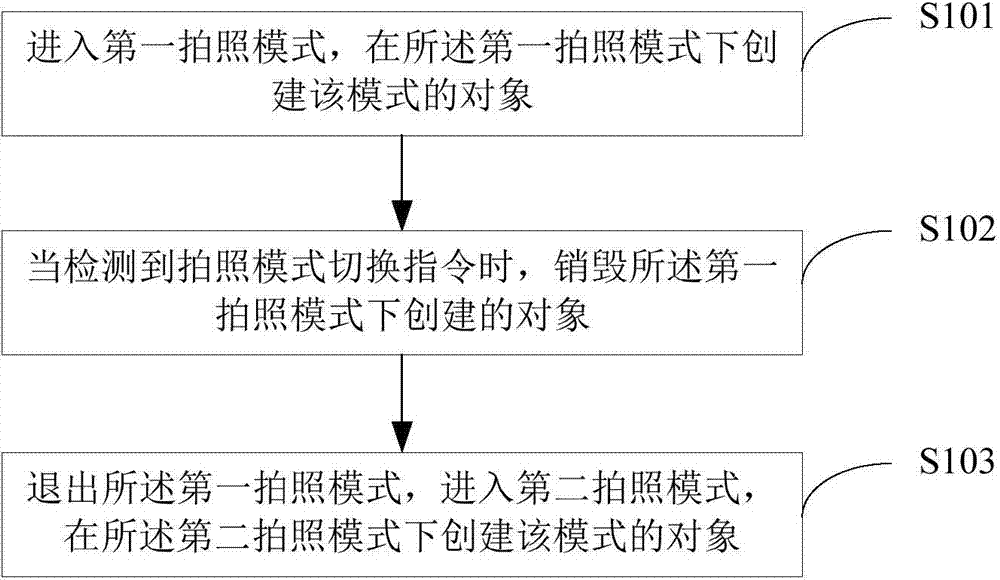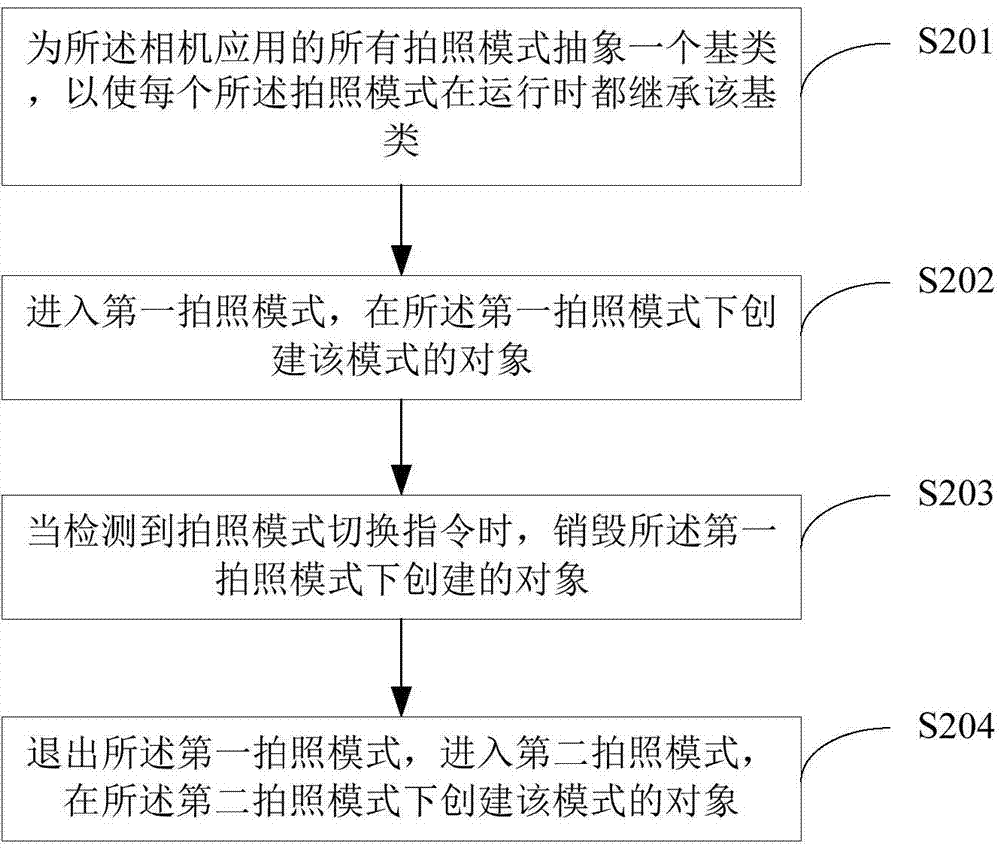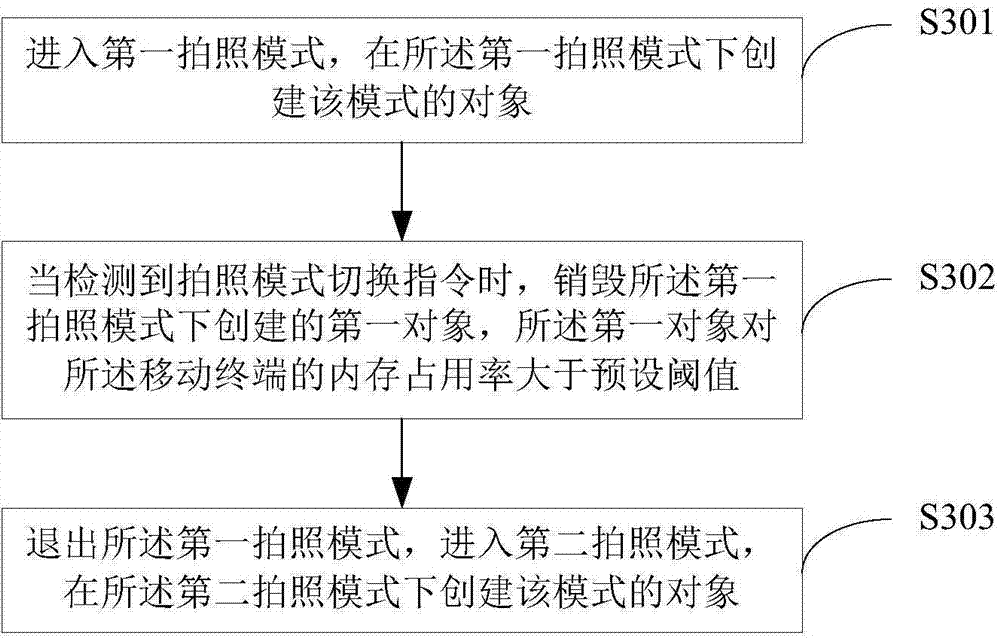Mobile terminal camera running method and device
A mobile terminal and operating method technology, which is applied to the components of color TVs, components of TV systems, TVs, etc., can solve problems such as large memory occupation, achieve the effect of low occupancy rate, and ensure stability and smoothness
- Summary
- Abstract
- Description
- Claims
- Application Information
AI Technical Summary
Problems solved by technology
Method used
Image
Examples
Embodiment 1
[0023] figure 1 It shows the implementation process of the camera operation method of the mobile terminal provided by Embodiment 1 of the present invention, and is described in detail as follows:
[0024] In S101, enter a first photographing mode, and create an object of this mode in the first photographing mode.
[0025] In this embodiment, "first" and "second" are used to distinguish two different photographing modes in the camera application of the mobile terminal. At the same time, for each camera mode, two general implementation methods are defined in the background:
[0026] 1. Mode entry method, you can define the code as follows:
[0027] final public void initCameraMode()
[0028] {
[0029] onInitCameraMode();
[0030]}
[0031] This method is run when entering the camera mode, and is used to make the camera application run into the corresponding camera mode;
[0032] 2. Mode exit method, you can define the code as follows:
[0033] final public void deInitCam...
Embodiment 2
[0046] In this embodiment, on the basis of Embodiment 1 of the present invention, a step of abstracting a base class for all photographing modes applied by the camera is added, such as figure 2 Shown:
[0047] In S201, a base class is abstracted for all photographing modes applied by the camera, so that each photographing mode inherits the base class at runtime.
[0048] In this embodiment, for the common part of all camera modes in the camera application, it can be abstracted into a base class. When entering any camera mode, by inheriting the base class, the method in the base class is realized. Complete the creation of common parts. Wherein, the common parts include, but are not limited to, the above-mentioned mode entry method, mode exit method, preview screen common to each photographing mode, photographing button, and the like.
[0049] In S202, enter a first photographing mode, and create an object in this mode in the first photographing mode.
[0050] In S203, when ...
Embodiment 3
[0054] In this embodiment, on the basis of the first or second embodiment of the present invention, the step of destroying the object created in the first photographing mode is further limited, as follows image 3 Shown:
[0055] In S301, enter a first photographing mode, and create an object of this mode in the first photographing mode.
[0056]In S302, when a photographing mode switching instruction is detected, the first object created in the first photographing mode is destroyed, and the memory usage rate of the first object for the mobile terminal is greater than a preset threshold.
[0057] In this embodiment, a preset threshold is set in the mobile terminal in advance, and the preset threshold is used to judge the occupation of the memory of the mobile terminal by objects created in the photographing mode. When a photographing mode switching instruction is detected, it is necessary to exit the first In camera mode, destroy objects whose memory usage rate is greater tha...
PUM
 Login to View More
Login to View More Abstract
Description
Claims
Application Information
 Login to View More
Login to View More - R&D
- Intellectual Property
- Life Sciences
- Materials
- Tech Scout
- Unparalleled Data Quality
- Higher Quality Content
- 60% Fewer Hallucinations
Browse by: Latest US Patents, China's latest patents, Technical Efficacy Thesaurus, Application Domain, Technology Topic, Popular Technical Reports.
© 2025 PatSnap. All rights reserved.Legal|Privacy policy|Modern Slavery Act Transparency Statement|Sitemap|About US| Contact US: help@patsnap.com



